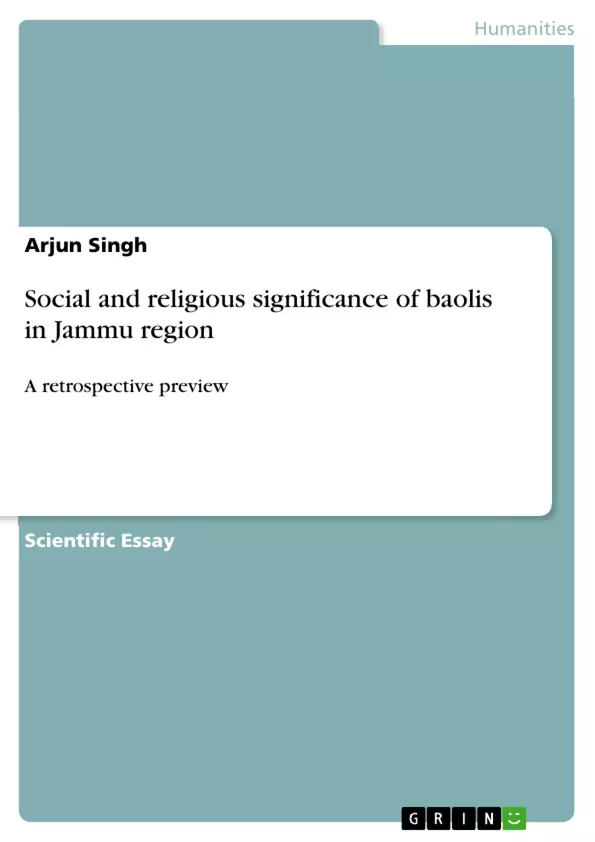Heritage is a wide conception that encompasses our natural, indigenous and historic or cultural inheritance. It refers to something, which is inherited from one’s ancestors something immaterial, as a style of philosophy that is passed from one generation to another. It can be divided into various categories but here we are concerned with the built heritage. Built heritage, in its broadest sense consists of an individual or group of buildings, structures, monuments, or installation or remains, which are associated with architectural, cultural, social, political, economic, or military history.
The baolis or natural water springs of Jammu region are unique examples where ecological and environment considerations have led to sanctifying of perennial water sources since ancient times. In grained into of the life of rhythm of hill and high land communities of outer Himalayan ranges of Jammu regions. These sacred springs have evolved as cultural institutions that not only showcase social, religious practices but also are windows to native art and architecture. [...]
Inhaltsverzeichnis (Table of Contents)
- Introduction
- Social and Religious Significance of Baolis in Jammu Region
- Two Categories of Baolies
- Baolies as a Social Institution
- Religious Significance of Baolies
- Baolies: An Integral Part of Religious Organizations
- SUMMARY AND DISCUSSION
- Papa-Nashini baoli at Suddh Mahadev.
- Dhan baoli.
- The baoli of Lahdi.
- Baoli of Dhatha Dhanda.
- Jandi.
- Airwan.
Zielsetzung und Themenschwerpunkte (Objectives and Key Themes)
This text delves into the historical, social, and religious significance of natural water springs, known as baolis, in the Jammu region. It examines their role as sources of water, symbols of community life, and sacred sites for religious practices. The text highlights the unique architecture and artistic expressions associated with these structures.
- The historical development of baolis in Jammu region.
- The social and religious practices connected to baolis.
- The architectural styles and artistic elements of baolis.
- The decline of baolis in modern times.
- The cultural and historical importance of baolis as a source of information about the past.
Zusammenfassung der Kapitel (Chapter Summaries)
The introduction provides a broad overview of the concept of heritage and focuses on built heritage, particularly the baolis of the Jammu region. These baolis are described as unique examples of environmental considerations and cultural institutions that showcase social and religious practices. The text emphasizes the importance of these structures for the local communities and their role in water harvesting.
The following section examines the two main categories of baolis in the Jammu Shivalik region: small baolies and larger springs called "Naun." The text highlights the architectural features of these structures, including their square, hexagonal, and octagonal shapes. It also describes how these springs act as central gathering places for the local community, serving as a focal point for social interactions and religious rituals.
The text further delves into the religious significance of baolis, noting their semi-religious character and their evolution into sacred places. It explores the integration of baolis with temples and the rituals associated with them. The author discusses the installation of icons, the celebration of annual fairs, and the importance of baolis in pilgrimage centers.
Schlüsselwörter (Keywords)
This preview explores the key themes of baolis, water springs, heritage, social institutions, religious practices, architecture, art, and the cultural history of the Jammu region. It delves into the significance of these structures in local communities and the impact of modern life on their preservation.
- Quote paper
- Dr. Arjun Singh (Author), 2014, Social and religious significance of baolis in Jammu region, Munich, GRIN Verlag, https://www.grin.com/document/284489



